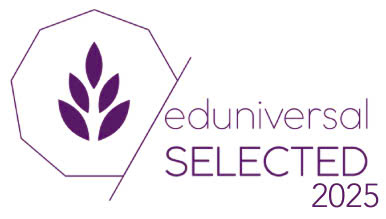- Eduniversal
-
-
Business Schools Ranking
-
Africa
- Algeria
- Angola
- Benin
- Cabo Verde
- Cameroon
- Congo
- Djibouti
- Egypt
- Eswatini
- Ethiopia
- Gabon
- Ghana
- Ivory Coast
- Kenya
- Lesotho
- Madagascar
- Malawi
- Mali
- Mauritania
- Mauritius
- Morocco
- Mozambique
- Namibia
- Nigeria
- RDC
- Rwanda
- Senegal
- Sierra Leone
- Somalia
- South Africa
- Sudan
- Tanzania
- Togo
- Tunisia
- Uganda
- Zambia
- Zimbabwe
- Central & Eastern Europe
- Central Asia
- Eurasia & Middle East
- Far East Asia
- Latin America
- North America
- Oceania
- Western Europe
-
Africa
- Schools of Excellence by field
- Awards
- News
- Contact
Summary:
Discover how Panama’s business schools are adapting in 2025 to economic demands and educational gaps. This article discusses strategic trends, key challenges, and rising opportunities to strengthen business education in one of Latin America's fastest-growing economies.
Economic and Educational Context in Panama
Business schools in Panama in 2025 operate within a dynamic economic and educational environment marked by rapid economic growth and substantial challenges in human capital development.
Panama’s strategic geographical position as a logistics and financial hub supports a thriving economy with steady GDP growth projected around 4.5% in 2025. However, the country faces significant disparities in education quality and labor market outcomes, which influence the landscape of business education.
In comparison to regional efforts seen in places like Argentina, Panama's focus on revitalizing its labor market through business education underscores the growing role of higher education in shaping equitable growth.
Panama’s Economic Resilience and Education System Challenges
Economically, Panama’s recovery from recent shocks, such as the COVID-19 pandemic and mining sector disruptions, underscores resilience but highlights underlying structural issues like income inequality and informality in employment.
Educationally, the broader system grapples with coverage gaps, particularly in low-income sectors, a teacher strike crisis, and the need for curricular updates to align with labor demands and international standards.
Higher education, including business schools, is crucial to addressing these gaps by equipping students with skills that improve productivity and employability.
For instance, countries like Colombia have adopted similar approaches to leverage their academic institutions to fill labor market voids.
Key Trends Shaping Business Education in 2025
Internationalization and Regional Integration: Business schools are increasingly focused on fostering international connections and partnerships. For instance, the entry of a prominent Latin American school’s Executive Center in Panama reflects a strategic move to provide executive education enriched with global perspectives while leveraging Panama’s hub status in the Americas.
Emerging Specializations: Programs are expanding beyond traditional MBA curricula to incorporate fields like sustainable business, digital transformation, finance, and entrepreneurship. This shift aligns with Panama’s evolving economy and growing sectors including logistics, finance, and sustainability initiatives.
Regions such as Mexico have also diversified their business education offerings in a similar manner to align with national economic transformations.
Digital Transformation and Technological Advancement
Digital Transformation: Educational institutions are embracing technology to enhance learning and administrative processes. The use of information technologies for digital transformation, especially in inclusive education programs supported by international organizations, showcases this push to innovate schools’ operations and curricula.
As seen in Brazil, the adoption of e-learning and hybrid formats has enabled broader access and modernized business instruction, a movement mirrored in Panama's schools.
Sustainability, Corporate Partnerships, and Student Expectations
Sustainability and Corporate Partnerships: There is a growing emphasis on sustainability education, reflecting Panama’s national priorities to strengthen sustainable growth pathways. Business schools are developing closer ties with the private sector to co-create programs, internships, and research projects that cater to market needs and promote social responsibility.
Changing Student Expectations: Modern business students demand flexible, bilingual (Spanish-English) programs that provide real-world skills, networking opportunities, and exposure to international markets. Bilingual instruction and multicultural classroom environments respond to Panama's diverse population and global business connections.
Other leading nations in business education, such as Canada, have long adapted curricula based on bilingual accessibility to attract global talent—an approach increasingly being refined in Panama.
Major Challenges Facing Panama’s Business Schools
Funding and Competitiveness: Despite economic growth, sustained financial investment in higher education remains uneven. Business schools compete regionally and globally to attract qualified faculty, maintain accreditation, and update facilities, all while navigating limited public and private funding streams.
Attracting and Retaining Talent: The broader educational system’s struggles to retain educators and align curricula with labor market needs affect the pipeline of skilled professionals. Business schools must innovate to recruit both high-caliber faculty and capable students, facing competition from international institutions.
Observations in countries like Peru provide valuable insights into how regional competitors are addressing similar institutional hurdles.
Opportunities for Business Schools in Panama
Leveraging Panama’s Strategic Position: As a business gateway to the Americas, institutions can attract multinational students and executives by emphasizing regional expertise and cross-border networking.
Innovations in Program Delivery: Schools embracing online and hybrid models can expand access and flexibility, meeting diverse student needs while integrating cutting-edge technologies.
Strengthening Industry Linkages: Deepening partnerships with Panama’s corporate sector can enhance relevance, provide experiential learning, and facilitate job placement, aligning education with market realities.
Promoting Inclusiveness and Social Impact: Business schools can lead in developing programs addressing inequality and social entrepreneurship, cultivating leaders who contribute to equitable economic growth.
Neighboring regions like Costa Rica are seeing success in embedding social entrepreneurship and inclusion into business curricula, offering Panama a model to emulate.
Business Schools Ranking in Panama
|
2 Palmes of Excellence Good Business Schools with strong regional influence |
Rank Position in
Palmes’ League |
Deans’ Recommendation
rate 2025 |
|---|---|---|
|
Universidad Católica Santa María La Antigua - USMA Facultad de Negocios |
1 | 67 ‰ |
| 2 | 59 ‰ |
|
1 Palme of Excellence Business Schools with considerable local influence |
Rank Position in
Palmes’ League |
Deans’ Recommendation
rate 2025 |
|---|---|---|
| 1 | 62 ‰ |
The Eduniversal Selected Schools list aims to highlight institutions by country are not yet eligible for a Palmes of Excellence League entry but are on a positive path toward achieving it.
The schools on the Eduniversal Selected list have been recognized by Eduniversal for their innovative projects, disruptive energy, and growing potential.
The schools on the Eduniversal Selected list have been recognized by Eduniversal for their innovative projects, disruptive energy, and growing potential.
Technological University of Panama
University of Panama
For a complete overview of master’s programs in Panama, visit our website.
You’ll find updated rankings, detailed program profiles, and exclusive advice to help you choose the right path for your career.
You’ll find updated rankings, detailed program profiles, and exclusive advice to help you choose the right path for your career.






